
REWIND

My desert island discs selection...subject to change! Remember, this is just my personal choice of what I consider good albums - although, it goes without saying, that you should own them all if you don't already! OK, here we go, in alphabetical order...
BEACH BOYS Smile (recorded 1967 - unreleased)
 One of the most originals album ever recorded, Brian Wilson's LSD-inspired attempt to out-do his own "Pet Sounds" has never been officially released, although its appeared in various configurations on assorted bootlegs. A watered-down version was released as "Smiley Smile",
with other songs re-recorded for "20/20" and "Surf's Up", but this bootleg is the only way to hear how the likes of "Wind Chimes" and "Cabinessence" were supposed to sound, whilst the 'aural cartoon' "Heroes & Villains" appears in its' unedited seven-minute form, forming the centrepiece of the album. Some of the stranger ideas Brian Wilson had on this album included recording the boys 'playing' such items as saws, axes, fire engine sirens and vegetables; and taping dialogue inside a French horn... Amongst all the madness, sublime gems like "Surf's Up", "Prayer" and "The Old Master Painter/You Are My Sunshine" still beam through.
One of the most originals album ever recorded, Brian Wilson's LSD-inspired attempt to out-do his own "Pet Sounds" has never been officially released, although its appeared in various configurations on assorted bootlegs. A watered-down version was released as "Smiley Smile",
with other songs re-recorded for "20/20" and "Surf's Up", but this bootleg is the only way to hear how the likes of "Wind Chimes" and "Cabinessence" were supposed to sound, whilst the 'aural cartoon' "Heroes & Villains" appears in its' unedited seven-minute form, forming the centrepiece of the album. Some of the stranger ideas Brian Wilson had on this album included recording the boys 'playing' such items as saws, axes, fire engine sirens and vegetables; and taping dialogue inside a French horn... Amongst all the madness, sublime gems like "Surf's Up", "Prayer" and "The Old Master Painter/You Are My Sunshine" still beam through.
"Youth Nabbed As Sniper", and "Cautious Lip" feature a darker side to Blondie's music that rarely appeared again ("Fade Away & Radiate" being an exception); whilst "No Imagination" is a great example of Debbie Harry's underrated writing talent; and "Detroit 442" is a brilliantly authentic slice of white trash punk; and "Fan Mail" anticipates the Blondiemania of the following two years. A seriously cool album!
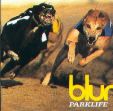 Not as introspective as its predecessor "Modern Life Is Rubbish", "Parklife" is an intelligent but accessible pop-art record and a clever synthesis of thirty years of British popular culture (Bowie's "Fashion" on "London Loves", Madness on the title track, Syd Barrett on "Far Out", 1977 punk on "Jubilee" and "Bank Holiday", the Kinks and Beatles' flirtation with Edwardian England on the oompah-oompah instrumental "The Debt Collector"); whilst "This Is A Low" and "End of a Century" present a far more cynical and ironic view of fin-de-siecle England (akin to the Specials' "More Specials") than the ensuing Britpop and Cool Britannia nonsense - which Blur was unfortunately pigeonholed with.
Not as introspective as its predecessor "Modern Life Is Rubbish", "Parklife" is an intelligent but accessible pop-art record and a clever synthesis of thirty years of British popular culture (Bowie's "Fashion" on "London Loves", Madness on the title track, Syd Barrett on "Far Out", 1977 punk on "Jubilee" and "Bank Holiday", the Kinks and Beatles' flirtation with Edwardian England on the oompah-oompah instrumental "The Debt Collector"); whilst "This Is A Low" and "End of a Century" present a far more cynical and ironic view of fin-de-siecle England (akin to the Specials' "More Specials") than the ensuing Britpop and Cool Britannia nonsense - which Blur was unfortunately pigeonholed with.
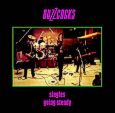 It's only a compilation of A and B sides put together for the American market, but the Buzzcocks were so adept at writing and recording short snappy two-and-a-half-minute singles (one single, "I Don't Mind", clocks in at only 90 seconds long!) and seemed to specialise in bitter songs of teenage angst and unrequited love, that this collection hangs together conceptually. Although a punk band, the Buzzcocks' songs were perfect power pop, and Pete Shelley's effeminate whine is a refreshing change from the football terrace style vocals of the more laddish punk bands of the time. Top tracks: "Orgasm Addict", "What Do I Get", "Why Can't I Touch It?", "Promises", "Lipstick", "Oh Shit!", "Ever Fallen In Love (With Someone You Shouldn't Have)?"
It's only a compilation of A and B sides put together for the American market, but the Buzzcocks were so adept at writing and recording short snappy two-and-a-half-minute singles (one single, "I Don't Mind", clocks in at only 90 seconds long!) and seemed to specialise in bitter songs of teenage angst and unrequited love, that this collection hangs together conceptually. Although a punk band, the Buzzcocks' songs were perfect power pop, and Pete Shelley's effeminate whine is a refreshing change from the football terrace style vocals of the more laddish punk bands of the time. Top tracks: "Orgasm Addict", "What Do I Get", "Why Can't I Touch It?", "Promises", "Lipstick", "Oh Shit!", "Ever Fallen In Love (With Someone You Shouldn't Have)?"
A real singer-songwriter album, with Little Feat providing tight backing, and Cale's beautiful Welsh voice and hammering piano style to the fore. The songs also feature some interesting string arrangements, as Cale - a classically trained musician - wanted to hear classical arrangements in a pop setting that was a step more adventuruous than the twee 'classical for beginners' string quartets of Beatles songs like "Eleanor Rigby". He certainly succeeded - as "Paris 1919" itself testifies, when the orchestral into sends shivers down your spine!
 The music created by the 'Krautrock' groups of the early '70s - Can, Faust, Neu and Organisation (who mutated into Kraftwerk) - was so far ahead of its time, that people are only just starting to catch up with it, as bands like Radiohead try and do something beyond the confines of the four piece rock band. Much of it still sounds ahead of its time now, or at least surprisingly contemporary (see "Neu! 77" and "Faust IV"). This is certainly the case with Can, who started out from proggy Gong-like beginnings to the kind of 'cosmic space rock' also being made by Miles Davis, Parliament, "Ummagumma"-era Pink Floyd and Frank Zappa.
The music created by the 'Krautrock' groups of the early '70s - Can, Faust, Neu and Organisation (who mutated into Kraftwerk) - was so far ahead of its time, that people are only just starting to catch up with it, as bands like Radiohead try and do something beyond the confines of the four piece rock band. Much of it still sounds ahead of its time now, or at least surprisingly contemporary (see "Neu! 77" and "Faust IV"). This is certainly the case with Can, who started out from proggy Gong-like beginnings to the kind of 'cosmic space rock' also being made by Miles Davis, Parliament, "Ummagumma"-era Pink Floyd and Frank Zappa. "Tago Mago"s power comes from its' hypnotic, distorted, repetitive riffs and ambient drone ("Mushroom Head") and Damo Suzuki's fractured vocal style, married to the psychokinetic rhythms of the hypnotic bass grooves and almost tribal percussion - check out "Halleluwah" and "Oh Yeah". You can hear the sound of quite a few cutting-edge bands here, from "Metal Box"-era Public Image Limited to The Fall and Happy Mondays.
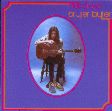 Apparently Nick Drake fanatics tend to downplay this album as it is his most 'accessible', but I don't see why that it such a criticism (see also the third Velvet Underground album, below). "Bryter Layter" is an album of fragile beauty, with Nick Drake's delicate voice and some beautiful instrumentation, with guest musicians including Richard Thompson (guitar) and John Cale (viola, celeste, organ), and has a wisftul autumnal mood. "Northern Sky" is one of the prettiest songs I've ever heard, and the reflective "One of These Things First" is also touching, whilst "Bryter Layter" itself sounds like it could be the theme music to "Tales from the Riverbank" or "The Herbs"!
Apparently Nick Drake fanatics tend to downplay this album as it is his most 'accessible', but I don't see why that it such a criticism (see also the third Velvet Underground album, below). "Bryter Layter" is an album of fragile beauty, with Nick Drake's delicate voice and some beautiful instrumentation, with guest musicians including Richard Thompson (guitar) and John Cale (viola, celeste, organ), and has a wisftul autumnal mood. "Northern Sky" is one of the prettiest songs I've ever heard, and the reflective "One of These Things First" is also touching, whilst "Bryter Layter" itself sounds like it could be the theme music to "Tales from the Riverbank" or "The Herbs"!The only hint of whatever personal tragedy led to Nick Drake's suicide - give or take the regretful tone of "One of These Things First" - appears in the eerie closing song "Sunday". Other than that it's quite a mellow album great for lazy Sundays, or playing to unsuspecting Belle & Sebastian fans.
 One of the masterpieces of French music, Serge Gainsbourg's 1971 epic concept album features swirling Eastern-style strings, stinging electric guitar breaks, funky percussion and Jane Birkin's breathy whispering and Bjorky yelps. "Melody Nelson" has become a cult classic, namechecked by David Holmes, Air (quelle surprise) and many other modern musicians.
One of the masterpieces of French music, Serge Gainsbourg's 1971 epic concept album features swirling Eastern-style strings, stinging electric guitar breaks, funky percussion and Jane Birkin's breathy whispering and Bjorky yelps. "Melody Nelson" has become a cult classic, namechecked by David Holmes, Air (quelle surprise) and many other modern musicians.
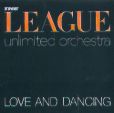 One of those rarest things, a remix album that is even better than the original. Even more amazing given that this revolutionary album was one of the first remix albums - not just a collection of extended remixes, but a complete re-imagining of The Human League's "Dare!", assembled by producer Martin Rushent. Rushent removed 90 percent of the vocals and restructured the songs, often altering the tempo or stripping down the song, seamlessly segued into two side-long tracks. Brilliant stereo mixing, and an album perfect for headphones listening on the hi fi or personal stereo, or just dancing to!
One of those rarest things, a remix album that is even better than the original. Even more amazing given that this revolutionary album was one of the first remix albums - not just a collection of extended remixes, but a complete re-imagining of The Human League's "Dare!", assembled by producer Martin Rushent. Rushent removed 90 percent of the vocals and restructured the songs, often altering the tempo or stripping down the song, seamlessly segued into two side-long tracks. Brilliant stereo mixing, and an album perfect for headphones listening on the hi fi or personal stereo, or just dancing to!
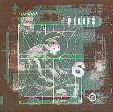 The Pixies were the '80s equivalent of the Velvet Underground - a relatively obscure band during their brief existance, yet somehow one of the most influential bands of alternative rock; indeed even Nirvana would sound very different without the Pixies, much as people talk about their originality. "Doolittle" features at least four alternative rock classics - "Debaser", "Wave of Mutilation", "Here Comes Your Man" and "Monkey Gone To Heaven". Their music is a unique mixture of '50s surf pop, Cramps-style garage rock and punk, with a slight Neil Young influence; occupying the same landscape as David Lynch films. The anti-REM!
The Pixies were the '80s equivalent of the Velvet Underground - a relatively obscure band during their brief existance, yet somehow one of the most influential bands of alternative rock; indeed even Nirvana would sound very different without the Pixies, much as people talk about their originality. "Doolittle" features at least four alternative rock classics - "Debaser", "Wave of Mutilation", "Here Comes Your Man" and "Monkey Gone To Heaven". Their music is a unique mixture of '50s surf pop, Cramps-style garage rock and punk, with a slight Neil Young influence; occupying the same landscape as David Lynch films. The anti-REM!
Iggy has all but disowned this ultra-commercial effort, in spite of the fact that songs like "Isolation" and "Hideaway" feature some of his most personal, vulnerable lyrics of his career thus far. It's 80s pop, as I say, but the minimal production goes to show that it doesn't have to sound like Stock Aitken And Waterman-style 'everything but the kitchen sink' vulgarities - just check out "Baby It Can't Fall". The album's techno-pop mix of rocky guitar with sequencers and choppy backbeats is a formula that Bowie had several attempts at trying to recreate on his own albums, only managing to refine it on 1997's "Earthling".
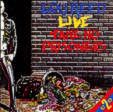 When you get a Lou Reed live album, you know you're not just going to get straightforward renditions of his songbook. "Take No Prisoners" is a brilliantly authentic live album recorded on his home turf of New York City in 1978, and is probably as close to the 'real' Lou Reed as you can get. As well as some unique versions of "Sweet Jane", "Berlin", "Waiting For The Man" and "Satellite of Love", with improvised lyrics and hilarious ad libs, Lou spends as much time talking as singing, acting more like a stand-up comedian!
When you get a Lou Reed live album, you know you're not just going to get straightforward renditions of his songbook. "Take No Prisoners" is a brilliantly authentic live album recorded on his home turf of New York City in 1978, and is probably as close to the 'real' Lou Reed as you can get. As well as some unique versions of "Sweet Jane", "Berlin", "Waiting For The Man" and "Satellite of Love", with improvised lyrics and hilarious ad libs, Lou spends as much time talking as singing, acting more like a stand-up comedian! The wierdest duo ever to get into the top ten, "Kimono My House" (with its memorable Geisha girls cover) is the fullest flowering of the Sparks brothers Ron and Russell Mael's mixture of "Sheer Heart Attack"-era Queen guitar-driven bombast, Russell Mael's castrato operatics, and keyboardist Ron Mael's deadpan lyrics full of bitter-sweet boy-meets-girl scenarios, innuendo and puns. There's always something new to hear each time you play this album, either in the wordy lyrics or the layered mix.
The wierdest duo ever to get into the top ten, "Kimono My House" (with its memorable Geisha girls cover) is the fullest flowering of the Sparks brothers Ron and Russell Mael's mixture of "Sheer Heart Attack"-era Queen guitar-driven bombast, Russell Mael's castrato operatics, and keyboardist Ron Mael's deadpan lyrics full of bitter-sweet boy-meets-girl scenarios, innuendo and puns. There's always something new to hear each time you play this album, either in the wordy lyrics or the layered mix. Even heavier than the first album, hitting the ground running with "Down On The Street" and not letting up until the dying groans of the free-jazz freak out "L.A. Blues". The only change in tempo is the self-hating ballad "Dirt", which starts off in Jim Morrison mode, before breaking out into a rage of animalist fury. The stop-start breakdown in "T.V. Eye" is one of the coolest moments on a rock record..
 The stepping stone between the gonzo surf-pop of their debut "Fuzzy Logic" and the more experimental "Guerilla", the Super Furries push the boundaries of the pop song back as much as possible whilst retaining its basic sensibilities with their gorgeous harmonies and catchy melodies.
The stepping stone between the gonzo surf-pop of their debut "Fuzzy Logic" and the more experimental "Guerilla", the Super Furries push the boundaries of the pop song back as much as possible whilst retaining its basic sensibilities with their gorgeous harmonies and catchy melodies. Their lyrical content is never mundane - ranging from 'chupacabras' (mythical South American blood-sucking bat-monsters), to the life of Albert Einstein ("They call him MC squared, cos he raps like no other; an asthma sufferer like Ernesto Guevara") - although, the wordplay and zaniness aside, the album also features some poignant introspective moments such as the gorgeous "Demons" and very dark "Download".
Marc's acoustic background with Tyrannosaurus Rex is still present on beautiful songs such as the autobiographical (and, in retrospect, rather morbid) "Cosmic Dancer", the McCartneyish "Life's A Gas"; and Bolan's poetic lyrics are tremendously evocative with much space age and romantic imagery. For anyone who doesn't take Marc Bolan seriously as a musician, look no further than the slinky blues number "Mambo Sun" with some great work playing by the national elf.
The first of Lou Reed's attempts to present an album as a thematic whole, "The Velvet Underground", contains some of his most elegaic meditations on love and relationships - from the beautiful-sad "Candy Says", to the poignant "Pale Blue Eyes" ("The fact that you are married only proves you are my best friend") and the erotic "Some Kinda Love". Also introduces us to the joy of Maureen Tucker's singing voice on "After Hours", for which we should be eternally grateful. The album has an acoustic, intimate feel, and was deliberately given a muffled mix - commonly known as "the closet mix" (unfortunately the current CD features Verve's 'official' mix, complete with a completely different version of "Some Kinda Love").
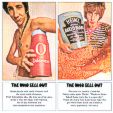 In my opinion, the best thing The Who ever did - certainly more concise and light-hearted than their overlong rock operas "Tommy" and "Quadrophenia". A hommage to the pirate radio stations and their non-stop diet of pop songs and adverts, "The Who Sell Out" is a celebration of the the material world of '60s teen life and pop culture.
In my opinion, the best thing The Who ever did - certainly more concise and light-hearted than their overlong rock operas "Tommy" and "Quadrophenia". A hommage to the pirate radio stations and their non-stop diet of pop songs and adverts, "The Who Sell Out" is a celebration of the the material world of '60s teen life and pop culture.
Pete Townshend justifies his position as one of Britain's most insightful songwriters with tragicomic vignettes about such teenage traumas a a girl whose perspiration problem ruins her chances of an audition ("She should have used Odorono...") and such rites of passage as getting a tattoo ("Welcome to my life, tattoo, I'm a man now thanks to you; I'm sure that I'll regret you but the skin graft man won't get you, you'll be there till I die...").
The CD reissue is stretched to bursting with a whole album's worth of outtakes and jingles that make "The Who Sell Out" twice as good as ever! Hopefully the alternative mono mix might make an appearance on CD one day...
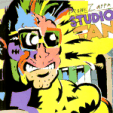 Near-impossible choice to pick one Zappa album out of the fifty-odd albums he released during his life time (some of them double and triple albums!). Do you choose seminal debut "Freak Out!", jazz/rock classic "Hot Rats", something from the Flo & Eddie era, big band masterpiece "The Grand Wazoo"...? "Studio Tan" is as good an example of Zappa at his best as any of the above, an quirky unpredictable album showing how Zappa had fun in the studio, and the comic book artwork gives an indication of the contents - this is the album with the lengthy cartoon-like "The Adventures of Greggery Peccary", the hi-speed bongos bubblegum surf-pop of "Lemme Take You To The Beach" and last but not least, "RDNZL", a deranged eight minute instrumental that blows the top off your head and takes you on a zigzag journey through various musical avenues with plenty of marimba madness, abstract chord progressions, and a monstro-guitar solo by Frank (the second greatest guitarist of the century after Jimi)
Near-impossible choice to pick one Zappa album out of the fifty-odd albums he released during his life time (some of them double and triple albums!). Do you choose seminal debut "Freak Out!", jazz/rock classic "Hot Rats", something from the Flo & Eddie era, big band masterpiece "The Grand Wazoo"...? "Studio Tan" is as good an example of Zappa at his best as any of the above, an quirky unpredictable album showing how Zappa had fun in the studio, and the comic book artwork gives an indication of the contents - this is the album with the lengthy cartoon-like "The Adventures of Greggery Peccary", the hi-speed bongos bubblegum surf-pop of "Lemme Take You To The Beach" and last but not least, "RDNZL", a deranged eight minute instrumental that blows the top off your head and takes you on a zigzag journey through various musical avenues with plenty of marimba madness, abstract chord progressions, and a monstro-guitar solo by Frank (the second greatest guitarist of the century after Jimi)